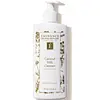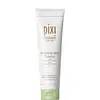What's inside
What's inside
 Key Ingredients
Key Ingredients

No key ingredients
 Benefits
Benefits

 Concerns
Concerns

 Ingredients Side-by-side
Ingredients Side-by-side

Terminalia Ferdinandiana Fruit Extract
AntioxidantMalt Juice
Skin ConditioningCitrus Limon Juice
Skin ConditioningPyrus Malus Juice
Skin ConditioningCalendula Officinalis Flower Extract
MaskingHydrolyzed Carrot Extract
Skin ConditioningTrifolium Pratense Extract
Skin ConditioningMilk
Skin ConditioningVitis Vinifera Seed Extract
AntimicrobialDioscorea Villosa Root Extract
Skin ConditioningRosmarinus Officinalis Leaf Extract
AntimicrobialCyamopsis Tetragonoloba Gum
Emulsion StabilisingZea Mays Silk Extract
Skin ConditioningGlycine Soja Extract
Skin ConditioningCitric Acid
BufferingMaltodextrin
AbsorbentZea Mays Oil
EmulsifyingHelianthus Annuus Seed Oil
EmollientGlycerin
HumectantStearic Acid
CleansingGlyceryl Stearate
EmollientCetearyl Alcohol
EmollientSodium Cetearyl Sulfate
CleansingCaesalpinia Spinosa Gum
Skin ConditioningCocos Nucifera Oil
MaskingCocos Nucifera Fruit Extract
EmollientRicinus Communis Seed Oil
MaskingBenzyl Alcohol
PerfumingDehydroacetic Acid
PreservativeSalicylic Acid
MaskingMethyl Glucose Sesquistearate
EmollientXanthan Gum
EmulsifyingSodium Benzoate
MaskingPotassium Sorbate
PreservativeCalendula Officinalis Flower Oil
MaskingLactic Acid
BufferingCalcium Ascorbate
AntioxidantTocopherol
AntioxidantLecithin
EmollientCitrus Limon Fruit Extract
MaskingMalpighia Emarginata Fruit Extract
Skin ConditioningPhyllanthus Emblica Fruit Extract
HumectantAdansonia Digitata Seed Oil
EmollientCamphor
MaskingDaucus Carota Sativa Root Extract
Skin ConditioningCocos Nucifera Water
MaskingLycium Barbarum Fruit Extract
AstringentTapioca Starch
Thioctic Acid
AntioxidantTerminalia Ferdinandiana Fruit Extract, Malt Juice, Citrus Limon Juice, Pyrus Malus Juice, Calendula Officinalis Flower Extract, Hydrolyzed Carrot Extract, Trifolium Pratense Extract, Milk, Vitis Vinifera Seed Extract, Dioscorea Villosa Root Extract, Rosmarinus Officinalis Leaf Extract, Cyamopsis Tetragonoloba Gum, Zea Mays Silk Extract, Glycine Soja Extract, Citric Acid, Maltodextrin, Zea Mays Oil, Helianthus Annuus Seed Oil, Glycerin, Stearic Acid, Glyceryl Stearate, Cetearyl Alcohol, Sodium Cetearyl Sulfate, Caesalpinia Spinosa Gum, Cocos Nucifera Oil, Cocos Nucifera Fruit Extract, Ricinus Communis Seed Oil, Benzyl Alcohol, Dehydroacetic Acid, Salicylic Acid, Methyl Glucose Sesquistearate, Xanthan Gum, Sodium Benzoate, Potassium Sorbate, Calendula Officinalis Flower Oil, Lactic Acid, Calcium Ascorbate, Tocopherol, Lecithin, Citrus Limon Fruit Extract, Malpighia Emarginata Fruit Extract, Phyllanthus Emblica Fruit Extract, Adansonia Digitata Seed Oil, Camphor, Daucus Carota Sativa Root Extract, Cocos Nucifera Water, Lycium Barbarum Fruit Extract, Tapioca Starch, Thioctic Acid
Water
Skin ConditioningMyristic Acid
CleansingGlycerin
HumectantPotassium Hydroxide
BufferingPalmitic Acid
EmollientGlyceryl Stearate
EmollientGlycol Distearate
EmollientStearic Acid
CleansingSorbitan Olivate
EmulsifyingJojoba Esters
EmollientPEG-100 Stearate
Cocamidopropyl Betaine
CleansingPhenoxyethanol
PreservativePanthenol
Skin ConditioningHydroxyethylcellulose
Emulsion StabilisingSodium Chloride
MaskingBifida Ferment Lysate
Skin ConditioningCocos Nucifera Fruit Extract
EmollientAvena Strigosa Seed Extract
Skin ConditioningOriganum Vulgare Leaf Extract
Skin ConditioningChamaecyparis Obtusa Leaf Extract
Skin ConditioningSalix Alba Bark Extract
AstringentLactobacillus/Soybean Ferment Extract
Skin ConditioningPortulaca Oleracea Extract
Skin ConditioningCinnamomum Cassia Bark Extract
MaskingScutellaria Baicalensis Root Extract
AstringentLecithin
EmollientParfum
MaskingAllantoin
Skin ConditioningEthylhexylglycerin
Skin ConditioningDisodium EDTA
Potassium Sorbate
PreservativeCitric Acid
BufferingButylene Glycol
HumectantWater, Myristic Acid, Glycerin, Potassium Hydroxide, Palmitic Acid, Glyceryl Stearate, Glycol Distearate, Stearic Acid, Sorbitan Olivate, Jojoba Esters, PEG-100 Stearate, Cocamidopropyl Betaine, Phenoxyethanol, Panthenol, Hydroxyethylcellulose, Sodium Chloride, Bifida Ferment Lysate, Cocos Nucifera Fruit Extract, Avena Strigosa Seed Extract, Origanum Vulgare Leaf Extract, Chamaecyparis Obtusa Leaf Extract, Salix Alba Bark Extract, Lactobacillus/Soybean Ferment Extract, Portulaca Oleracea Extract, Cinnamomum Cassia Bark Extract, Scutellaria Baicalensis Root Extract, Lecithin, Parfum, Allantoin, Ethylhexylglycerin, Disodium EDTA, Potassium Sorbate, Citric Acid, Butylene Glycol
Ingredients Explained
These ingredients are found in both products.
Ingredients higher up in an ingredient list are typically present in a larger amount.
Citric Acid is an alpha hydroxy acid (AHA) naturally found in citrus fruits like oranges, lemons, and limes.
Like other AHAs, citric acid can exfoliate skin by breaking down the bonds that hold dead skin cells together. This helps reveal smoother and brighter skin underneath.
However, this exfoliating effect only happens at high concentrations (20%) which can be hard to find in cosmetic products.
Due to this, citric acid is usually included in small amounts as a pH adjuster. This helps keep products slightly more acidic and compatible with skin's natural pH.
In skincare formulas, citric acid can:
While it can provide some skin benefits, research shows lactic acid and glycolic acid are generally more effective and less irritating exfoliants.
Most citric acid used in skincare today is made by fermenting sugars (usually from molasses). This synthetic version is identical to the natural citrus form but easier to stabilize and use in formulations.
Read more about some other popular AHA's here:
Learn more about Citric AcidCocos Nucifera Fruit Extract comes from the meat of the coconut fruit. It is an emollient and skin conditioner with antioxidant properties.
Coconut fruit is naturally rich in amino acids, sugars, and nutrients including Vitamin C and small amounts of vitamin B. Malic acid can also be found in coconut fruit extract.
Glycerin is already naturally found in your skin. It helps moisturize and protect your skin.
A study from 2016 found glycerin to be more effective as a humectant than AHAs and hyaluronic acid.
As a humectant, it helps the skin stay hydrated by pulling moisture to your skin. The low molecular weight of glycerin allows it to pull moisture into the deeper layers of your skin.
Hydrated skin improves your skin barrier; Your skin barrier helps protect against irritants and bacteria.
Glycerin has also been found to have antimicrobial and antiviral properties. Due to these properties, glycerin is often used in wound and burn treatments.
In cosmetics, glycerin is usually derived from plants such as soybean or palm. However, it can also be sourced from animals, such as tallow or animal fat.
This ingredient is organic, colorless, odorless, and non-toxic.
Glycerin is the name for this ingredient in American English. British English uses Glycerol/Glycerine.
Learn more about GlycerinGlyceryl Stearate is a mix of glycerin and stearic acid.
It is used to stabilize the mixing of water and oil ingredients. By preventing these ingredients from separating, it can help elongate shelf life. It can also help thicken the product's texture.
As an emollient, it helps soften skin and supports barrier-replenishing ingredients.
In cosmetics, Glyceryl Stearate is often made from vegetable oils or synthetically produced.
This ingredient may not be fungal-acne safe
Fun fact: The human body also creates Glyceryl Stearate naturally.
Learn more about Glyceryl StearateLecithin is a term for a group of substances found in the cell membranes of plants, animals, and humans. They are made up of mixture of phospholipids.
This ingredient has emollient and emulsifying properties.
As an emollient, lecithen helps soften the skin and creates a barrier to keep moisture in.
As an emulsifier, it also helps prevent water and oil ingredients from separating. Lecithin can also help ingredients be better absorbed by the skin.
This is because the phospholipids in lecithin produce liposomes. Liposomes help other ingredients get through the skin barrier.
Depending on the source of this ingredient, lecithin may not be fungal acne safe. This is because some sources of lecithin come from soybean oil, which may feed the malassezia yeast that feeds fungal acne.
We recommend reaching out to the brand you are purchasing from to inquire about the source of their lecithin.
Some other names for this ingredient include soy lecithin and deoiled soy lecithin.
Learn more about LecithinPotassium Sorbate is a preservative used to prevent yeast and mold in products. It is commonly found in both cosmetic and food products.
This ingredient comes from potassium salt derived from sorbic acid. Sorbic acid is a natural antibiotic and effective against fungus.
Both potassium sorbate and sorbic acid can be found in baked goods, cheeses, dried meats, dried fruit, ice cream, pickles, wine, yogurt, and more.
You'll often find this ingredient used with other preservatives.
Learn more about Potassium SorbateStearic Acid is a fatty acid. It is an emollient, emulsifier, and texture enhancer.
As an emollient, stearic acid helps soften skin. It aids the skin's protective barrier by preventing water loss. It also provides a gentle cleansing effect without stripping away natural oils.
Stearic acid may also be used to enhance the texture of products. It can add volume and stabilize ingredients such as water and oil. This can help water and oil ingredients from separating.
Sources of stearic acid include animal or vegetable fats/oils such as coconut or shea. It can be naturally found in butter, cocoa butter, shea butter, vegetable fats, and animal tallow.
This ingredient may not be Malassezia folliculitis, or fungal-acne safe.
Learn more about Stearic Acid